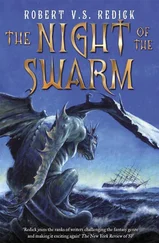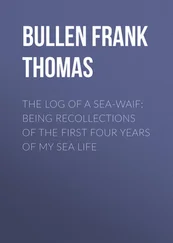A weight lifted from her mind with every passing kilometre. It had all clicked into place. Once she'd cleared up that business with Stone, she'd called Kare and volunteered to spend a few days with him on the coast. Kare had seemed pleased, if a little bewildered. Something in his voice made her suspect that Johanson had been right and that she'd settled on the right course just in time.
As the jeep rolled down Sveggesundet's high street towards the seafront, her pulse quickened. She left the vehicle in a car park just along from the Fiskehuset. A track and a path led down towards the sea. It didn't look like a typical beach: the boulders and slabs of stone were covered with moss and ferns. Although the area around Sveggesundet was flat, it was wild and romantic, and the view from the Fiskehuset, with its dining terrace on the front, was impressive – even on a misty, rainy morning like today.
Lund strolled to the restaurant and went in. Kare was out, and they hadn't started serving. A kitchen assistant walked past with a crate of vegetables, and told her that the boss had business in town. He didn't know when he'd be back.
It's your own fault, Lund told herself.
They'd agreed to meet there, but- probably because she'd driven like a mad thing – she was an hour early. She'd just have to sit and wait.
She stepped out onto the terrace. Rain pelted her face. Some people would have fled indoors, but Lund barely noticed it. She'd spent her childhood in the country. Sunny days were wonderful, but she enjoyed rain and gales too. Suddenly it occurred to her that the gusts that had rocked the jeep for the final half-hour of the journey had turned into a severe storm. The mist had thinned, but the clouds had sunk and were scudding low across the sky. White spray billowed from the furrowed sea.
Something wasn't right about it.
She'd been here often enough to know the place quite well, but now the beach looked longer than usual. The pebbles and rocks seemed to extend forever, despite the crashing waves. Like an impromptu ebb tide, she thought.
On impulse she pulled out her mobile and called Kare. She might as well tell him she had arrived – rather than risk taking him by surprise. She didn't want anything to go wrong.
His mobile rang four times, then switched to voicemail.
Fate had ruled otherwise. In that case, she'd just wait.
She wiped the dripping hair from her eyes and went inside, hoping that, if nothing else, the coffee machine was ready for action.
Tsunami
The sea was full of monsters. Since the beginning of human history it had been a place for symbols, myths and primal fears. The six-headed Scylla had preyed on Odysseus's companions. Angered by Cassiopeia's boastfulness, Poseidon had created Cetus, a sea monster, and cast sea snakes at Laocoon when he foretold the fall of Troy. Sirens were lethal to sailors unless they stopped their cars with wax. Mermaids, aquatic dinosaurs and giant squid haunted the imagination. Vampyroteutis infernalis was the antithesis of every human value. Even the horned creature of the Bible had risen from the sea. And then, to top it all, science, whose first allegiance was to scepticism, had taken to preaching the message of truth that lay at the heart of the legends. The coelacanth was alive. The giant squid existed. For thousands of years people had feared the creatures of the deep, but now they followed them excitedly. Nothing was sacred to the modern scientific mind, not even fear. Deep-sea monsters had become man's favourite playthings, the soft toys of science.
Except one.
It struck fear into the most rational mind. Rising up from the sea to sweep over the land, it brought with it death and destruction. It owed its name to the Japanese fishermen who had been spared its horrors out at sea, but had returned to their villages to find their homes devastated, their families dead. The word they used to describe it meant 'wave in the harbour'. Tsu for harbour; nami for wave.
Tsunami.
Alban's decision to plot a course for deep water showed that he knew the monster and its habits. Seeking the supposed protection of the harbour would be fatal.
While the Thorvaldson was battling its way through the choppy seas, the continental shelf and slope slid further into the depths. The downward pull lowered the sea level over a vast area. The water around the plummeting mass rose up, surging outwards in a wave that radiated across the ocean. Near the site of the slide, covering an area of several thousand square kilometres, the wave was so flat that its presence went undetected amid the raging storm. Its height above water reached scarcely a metre.
Then it hit the shallow water of the shelf.
Over the years Alban had learned what distinguished a tsunami from a normal surface wave. Ocean swells were usually the result of movement in the air: solar radiation warmed the atmosphere, but the warmth wasn't distributed equally across the surface of the planet so the heat was transferred by winds, which swept over the ocean, ruffling the water and creating waves. The water rose barely fifteen metres, even in a hurricane. Giant waves were the only exception. Normal surface waves reached a maximum speed of ninety miles an hour, and the effect of the wind stayed on the surface. Just two hundred metres lower, the water would be calm.
But tsunamis didn't form on the surface: they originated in the depths. They weren't the result of high winds: they were created by a seismic shock – and seismic shock waves travelled at entirely different speeds. Worst of all, the energy of the tsunami was transmitted throughout the water column all the way to the seabed. No matter how deep the ocean was, the wave was always in contact with the seabed. The entire mass of water was in motion.
The best demonstration that Alban had ever seen of a tsunami wasn't a computer simulation but something much more basic. Someone had filled a pail with water and rapped the bottom. Concentric rings had rippled through the water. To picture a tsunami, he had merely to imagine it several million times bigger.
Merely.
Triggered by the landslide, the tsunami propagated outwards at a speed of 700 kilometres per hour. The crest of the wave was long and flat. It carried a million tonnes of water and was laden with energy. Within a few minutes, it had reached the spot where the shelf had snapped. The water became shallower, acting as a brake. The wave front slowed, but lost little energy. The mass of water pushed onwards, but because it was slowing, it began to stack up. The shallower the water became, the higher the tsunami towered, while its length shrank dramatically. Normal surface waves joined in, riding on its crest. By the time it reached the platforms on the North Sea shelf it had decelerated to 400 kilometres per hour, but it was already fifteen metres high.
Fifteen metres was nothing to an oil platform – providing the wave was just normal surface swell.
A seismic wave that stretched from the seabed to the surface, carrying a fifteen-metre mound of water and travelling at four hundred kilometres per hour, had the momentum of a speeding jumbo jet.
GULLFAKS C, Norwegian Shelf
For a second Lars Jörensen thought he was too old to endure the final months on Gullfaks. He was trembling so much that the platform seemed to be vibrating with him. In all other respects he wasn't feeling too bad. A little depressed, maybe, but not ill.
Then it dawned on him that the platform was shaking, not him.
He stared at the derrick, then back out to sea. The sea was raging, but he'd seen worse and it had never affected the platform. Jörensen had heard of platforms shaking: it happened when a drilling operation triggered a blow-out, causing oil or gas to shoot up at high pressure. The whole platform could shudder back and forth. But that was impossible on Gullfaks, where the reserves were half empty, and the oil was pumped into sub-surface tanks. Besides, extraction took place at a distance, not under the platform.
Читать дальше












